If ever there was a toy for big boys (and girls), the Goliath mini-tug is it. While some boats of this type are impractical, the Goliath, with an 18′ LOA and an 8’2″ beam and a draft of 2′ 9″, promises enough room for short cruises and excellent stability for a comfortable ride.
As with most mini-tugs, the Goliath is a character boat and is not intended for use as a true working tug. It does not have the agility and strength for corralling larger boats, and it does not have superior towing ability. The Goliath is made for having fun.
I have always found mini-tugs to be both fascinating and curious. For me, they bring childhood books such as Little Toot and Scuffy the Tugboat to life—and I love that. A lot of mini-tug owners share this desire to capture a childhood fancy. Yet, often the finished boats of this type seem to be too small for their owners; a man at the helm can look oversized and out-of-place, like a circus bear riding a tricycle. Caricature overwhelms usefulness. But that isn’t the case with the Goliath, a Ken Hankinson design now carried by Glen-L. While an attention-grabber on the water, she also earns her keep as a family boat.
Hankinson designed a stable of well-regarded powerboats during his 22-year career (1965–1987). His boats remain popular, particularly among hobbyist builders, who appreciate his well-detailed plans.
On a brisk but sunny afternoon in late spring, I boarded ANDIAMO (Italian for “Let’s go!”) with owners, Tom and Connie Hammermeister, as they launched her near their home in midcoast Maine. The Hammermeisters chose to hire their local hauler for the job of transporting the boat from storage to shore, but the Goliath can be successfully trailered behind a large pickup or SUV.
ANDIAMO is a hefty boat, displacing about 3,200 lbs. She feels solid underfoot and recovers quickly from rolling—even the heavy rolling from the walls of water that peel off the sterns of nearby lobsterboats. She can attain 51⁄2 knots but feels most comfortable underway with her diesel rumbling along at about 3 knots.
Tom, an accomplished hobbyist boatbuilder, took some well-thought-out liberties with the design but stuck to the plan through most of the construction. The hull is plywood over sawn frames as per the plans.
In building the bottom, Tom used plywood near the stem, and then, where that piece leaves off (about a foot or so aft of the stem), he cold-molded the hull down to the amidships area to accommodate the compound curvature of the bottom in that section. He then finished the bottom using plywood from amidships on aft. (Boatbuilder Harry Bryan explains a similar method in WoodenBoat No. 217.) The hull has a hard chine and the topsides are also plywood. Once the wood was fastened in place, the hull was sheathed, inside and out, in fiberglass cloth and epoxy.
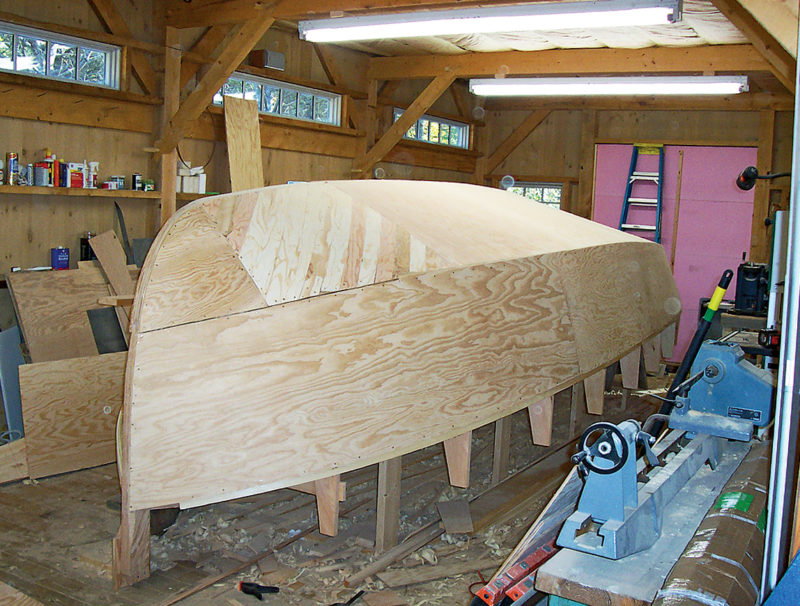
Goliath is built in “traditional” plywood construction, which is to say that the topside and bottom panels are joined by chine logs, and permanent transverse frames support those panels.
Then, departing from the plan, Tom redesigned the cockpit coaming to mimic the graceful curve of the stern. This required some judicious laminating, but the result is spectacular. Tom also made some clever additions inside the cockpit. First, he reconfigured the engine box for better access to the boat’s Yanmar 3GM30 (27-hp) diesel. Next, he built two extra boxes at this same height and width. They are placed in a row adjacent to the engine box, reaching aft into the open air of the cockpit and giving quick and easy access to the fuel tank and seat cushions; the boxes double as seating for guests. I think this is a good idea for this boat. It doesn’t crowd the cockpit in any way and it creates a comfortable, central place for several passengers to gather or for one to stretch out and enjoy the ride. Although standing is the preferred position for steering ANDIAMO, Tom built and installed a modest fold-up seat in case the helmsman wishes to sit down.
Steering is velvety smooth and responsive but without wandering. The plans aren’t specific about the steering, so Tom installed a Teleflex system, which includes a hydraulic arm with two-axis articulation that slows recovery and reduces wandering. While it is one of the boat’s more expensive components, it is worth it for the added comfort it provides.
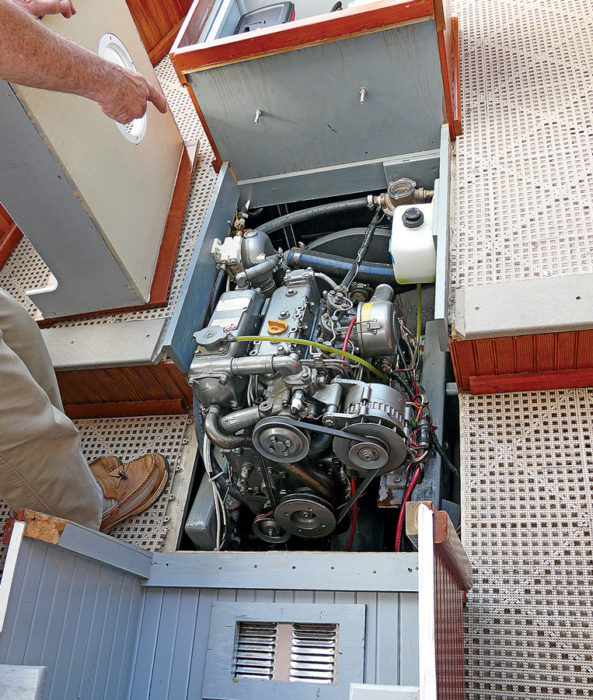
The Goliath featured here, ANDIAMO, is powered by a 27-hp Yanmar diesel, cleverly hidden in a box that doubles as a seat.
The arrangement plan shows a berth in the forward cabin, but Tom chose to leave this space bare for additional stowage. The cabin extends well forward beneath the foredeck and there is good headroom down below. It could easily accommodate two berths and a Porta-Potti if someone wanted to outfit the boat for weekend cruising. The plan suggests a galley inside the pilot-house, but Tom opted not to build one in ANDIAMO. He also decided against cutting holes for the deadlights that the plan details show on the cabin sides and pilot-house. Those could be cut at any time and, if this were my boat, I would install these appealing and well-placed deadlights, especially if I planned to outfit the cabin; it’s nice to look out on the morning from the warmth of the bunk.
I’m not as familiar with tugboats as I’d like to be, and I wondered how this design would hold up under the scrutiny of an honest-to-God tugboat man. Knowing this is a character boat and that I could be in for some chiding, I nevertheless sent the design to a man who has worked tugboats off the coast of Maine for decades. He found the boat appealing and was kind in his remarks, saying, “…picture this design with a small black stack and a rope beard on the bow. Maybe [add] a few lawn tractor tires attached to the port and starboard rails. Throw in a crusty old guy wearing a Greek fishermen’s cap and a cigar in his mouth and screaming four-letter words at his crew—and then you’d have a ‘real’ tug. It’s a cute design, but I’d stay within sight of land if I were running it.”
Tom Hammermeister shies away from falling into character that so departs from his genteel personality, but he did give ANDIAMO a rope beard. He chose not to add tires—and a smokestack was out of the question—but in keeping with that playful outlook he did search out and install an airhorn (a steam horn being too elaborate) that bugles stout and clear over the water. Tom agrees that keeping the boat close to shore is a good idea; he uses her for afternoon excursions with Connie, family, and friends, rarely losing sight of land.
There’s no denying that ANDIAMO was created to fulfill the dreams of childhood whimsy. But her underlying strength, seaworthiness, and sensible construction that are hallmarks of Ken Hankinson’s designs make her a worthwhile choice for years of family fun. As her name implies, everything about her says, “Let’s go!” ![]()
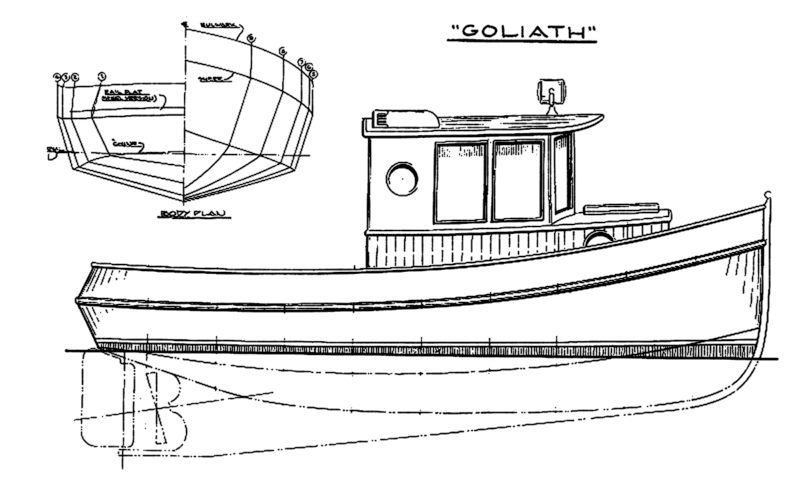
Goliath’s plans include full-sized patterns for frames and the stem, detailed instructions, and a materials list. Glen L also sells an optional fiberglass kit, which includes 2 1/4 gallons of epoxy, fiberglass cloth, and application tools.
Plans for Goliath are available from Glen-L Marine.


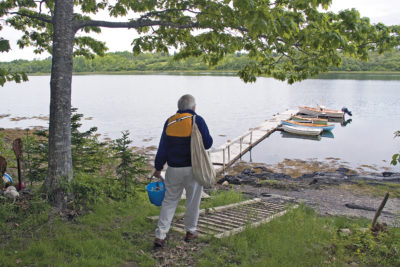
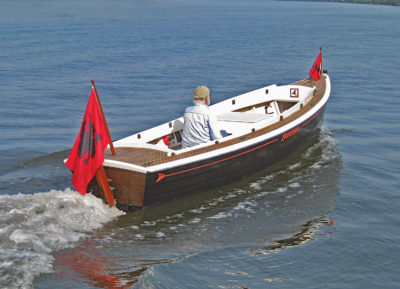
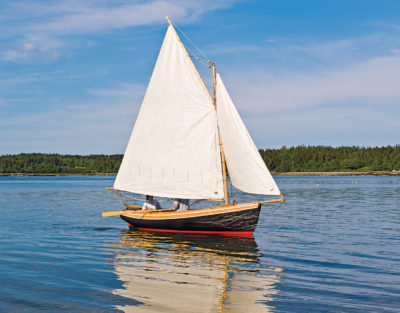
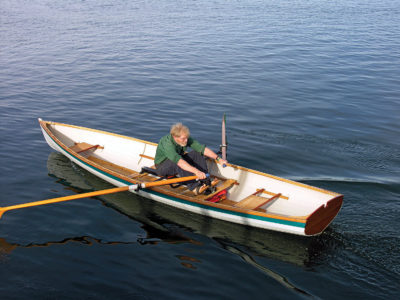
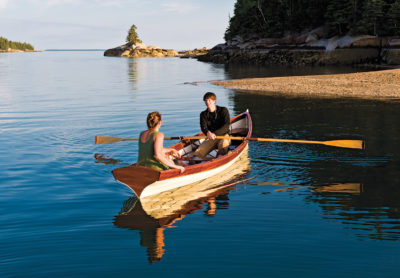

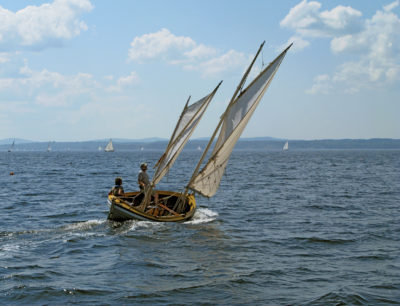
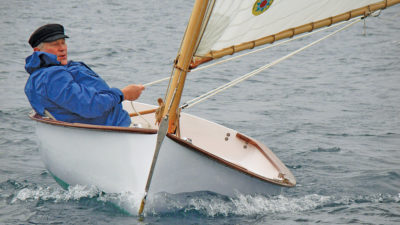
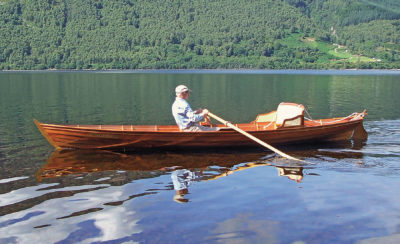
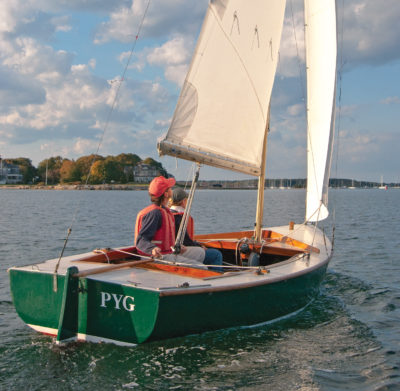
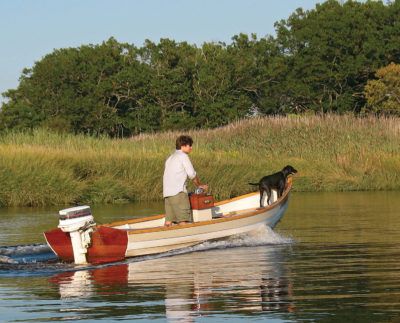
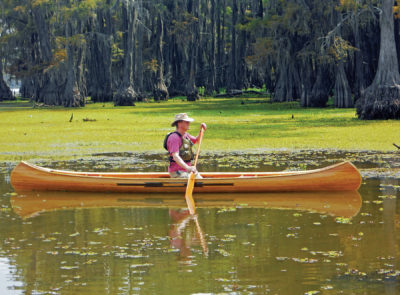
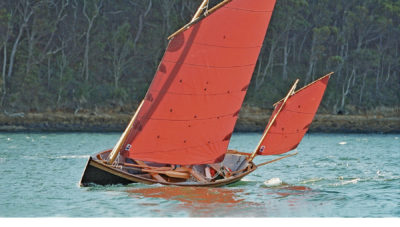
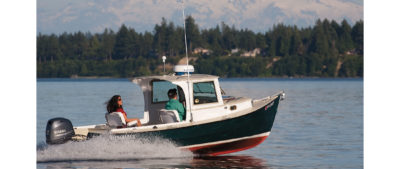
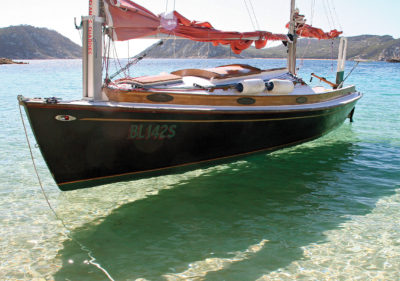

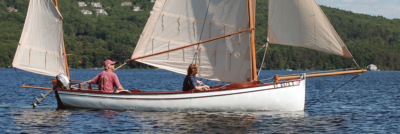
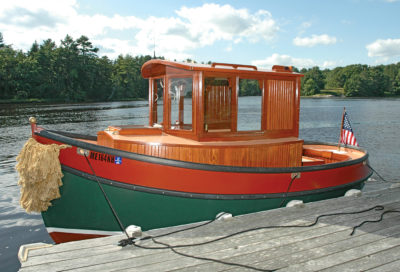
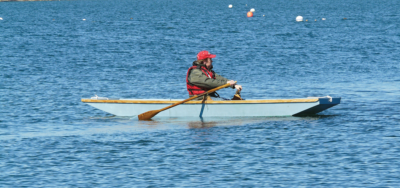
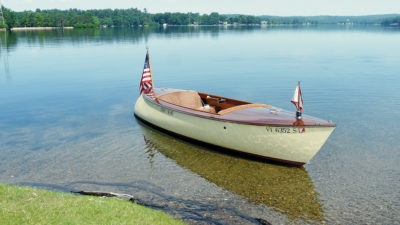
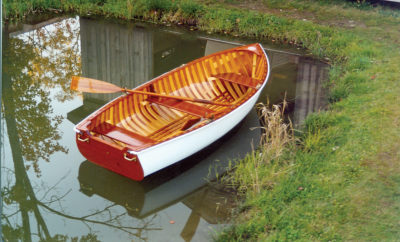
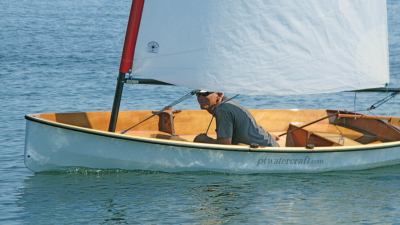
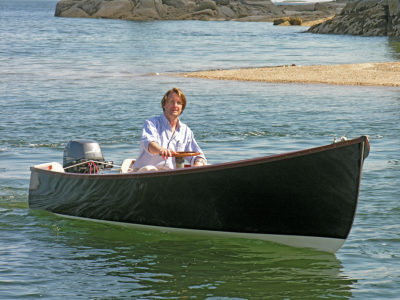
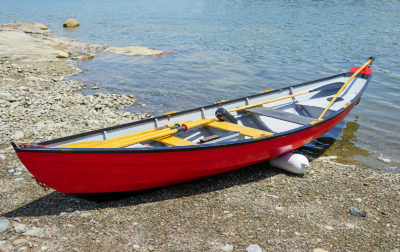
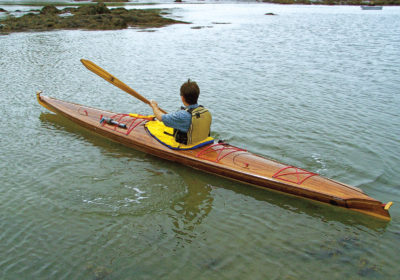
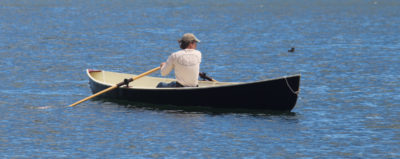

Beautiful boat
Very sweet day cruiser, tempts me to tackle building one.